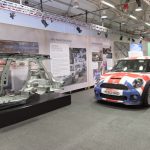With the shadow of a hard Brexit hanging over the UK, the question of how it will maintain a competitive automotive sector into the next decade is harder to answer than ever. With much uncertainty surrounding future trade terms, including the prospect of tariffs, customs checks and new barriers between the UK and the rest of the EU, many in the automotive logistics industry are concerned. In fact, more than 70% of delegates surveyed at this year’s Automotive Logistics UK summit expected a negative outcome for their businesses and the supply chain when the UK finally leaves the European Union in 2019.
Such uncertainty comes at a time when the UK automotive sector is facing decline this year for the first time since 2009. Sales for September following the issuing of the latest registration plates, one of two peak periods in the year, showed a 9.3% drop on the same month last year, according to figures from the Society of Motor Manufacturers and Traders (SMMT). Corresponding data from the European Automobile Manufacturers’ Association (ACEA) for the first eight months of the year show that vehicle registrations in the UK have fallen by almost 2.5% while they have gone up France (+4.2%), Germany (+2.9%), Italy (+9.1%) and Spain (+6.9). While registrations in the UK don’t give a full picture of manufacturing because of the volume exported, UK production output did fall 5.3% in August to 103,232 units, the fourth month of decline this year. The target of 2m light vehicle production by 2020, once considered likely by many analysts, is now in doubt.
However, there also positive signs for the UK market. Local sourcing of vehicle assembly for tier one supply has grown to 44% from 36% over the last five years, according to SMMT figures, demonstrating investment in the local supply chain and presenting local logistics opportunities. Investment for innovative projects has also improved, including the Brexit vote, according to David Tozer, programme manager for automotive at Innovate UK, the UK government’s innovation agency.
“The amount of money going into research and innovation has greatly increased since the Brexit announcement, which is fantastic for us because it means that we position more money with organisations in various different competitions,” he said (read more about Innovate UK’s funding for emissions reduction).
Tozer continued that Brexit had not affected the day-to-day activity at Innovate UK from what it was doing prior to the referendum and that European funding opportunities were still open despite Brexit. These include Horizon 2020, the EU Research and Innovation programme that has made €77 billion ($90 billion) of funding available over seven years to 2020.

Meanwhile, wider changes across the global automotive industry are certainly no different in the UK than elsewhere. Already, the government has announced a move towards banning most petrol and diesel vehicle sales by 2040, while the government is further encouraging investment into electromobility and autonomous vehicles. Meanwhile, carmakers are exploring new shared vehicle systems as well as online vehicle ordering and sales. Furthermore, manufacturers and logistics providers are looking to automation and new connectivity opportunities to improve logistics and supply chain efficiency. Regardless of whether the UK is part of the EU or single market, its supply chain will be no less impacted by industry in full transformation.
Looking for clues on Brexit
All those with a vested interest in the continued health of the UK car sector are hampered by a lack of clarity on the direction the government will take on Brexit and what it will mean for their businesses.
“We are working in all divisions of the company to get a real picture of what could happen,” said Juan Manuel Santiago Mendez, managing director for Mercedes-Benz Parts Logistics UK, responsible for the distribution of service parts and accessories in the country. “Brexit is a tricky thing because no one knows what is going on; we are waiting to see.”
Mendez said that obscurity was affecting the company’s ability to move forward. “We are not doing everything we would like to do because of Brexit,” he admitted.
Awais Ajmal, general manager of supply chain and business process at Kia Motors (UK), responsible for vehicle logistics, said there had to be a logical solution because the impact of Brexit, not only to the end customer but to the manufacturers around the world, would be massive. “End consumers will be paying significantly more for their vehicles [in the event of tariff and trade barriers],” he warned.
However, Bob Mountain, head of FVL, supply chain and logistics at Honda Europe, said that there were at least positive signs from the intensive lobbying of government that was now going on and the discussions that were underway.
Martin Benecke, manager of light vehicle sales forecasting, IHS Markit also provided some optimism by saying that, while in the immediate aftermath of the Brexit announcement had shocked many, many OEMs who have invested a lot in UK plants and technology had confirmed programmes well beyond 2019.
“I think they are optimistic that they [the UK government and the EU] will find a solution,” said Benecke, adding that carmakers, including the German OEMs, were dependent on the UK market to both sell and make vehicles there. “I think they will have enough power to make some deals between the UK and Germany, or the EU in general,” he said.
The EU trades as a bloc, which means a bilateral agreement between the UK and Germany is not possible; instead, any deal must be confirmed and agreed by all remaining EU 27 member states. However, the influence of German business and government is likely to be strong.
Nevertheless, many carmakers in the UK have the flexibility to move production to other locations quickly, including BMW’s Mini production at the VDL Nedcar plant in The Netherlands, Nissan models from Sunderland to other Renault Nissan locations, Toyota to Europe – and in future even Jaguar Land Rover’s new plant in Slovakia, set to open in 2019. That, according to Benecke, gives the OEMs the ability to exert pressure on the UK government.
The mix of uncertainty and promise reminded Gefco’s commercial director, John Stocker, of the ironic blessing: “may you live in interesting times”. Interesting times can mean those full of upheaval and for Stocker it was a case of embracing that upheaval and looking for the opportunities, with Brexit being a case in point.
Faced with how to plan for something the industry currently has no clear picture on, complex border issues around Brexit are something experts in logistics, customs and tax are going to have to embrace. Regardless of the final agreement, Stocker emphasised, customers will still want their goods to come into the country for delivery to their plants, and they will still want to export.
 John Stocker, commercial director, Gefco
John Stocker, commercial director, GefcoThere are also tax and duty questions over finished vehicle stock holding if the UK leaves the EU. It is currently common for carmakers in Europe to use vehicle compounds in locations like Belgium and the Netherlands to serve the UK. Stocker pointed out that since such compounds often hold 20,000-30 vehicles, which ties up a lot of working capital and raises many questions about how product transfers to the UK would work outside the single market and customs union.
“We can talk about the theory of Brexit and what it might mean, but as a business our responsibility to all of our stakeholders and customers is to make sure that we are thinking of these areas and putting plans in place,” said Stocker. “Life has to go on [and] we have to have practical solutions.”
Increasing productivity
Regardless of Brexit, the UK needs more investment and a collaborative approach to growth according to Mike Dickinson, general manager of automotive at the SMMT Industry Forum, the training and consultancy house owned by SMMT and tasked with improving supply chain and manufacturing performance. Like Bob Mountain at Honda, Dickinson said that the industry was now lobbying the government in a way that was positive to its aims of developing the right companies and technology in the UK, something that is needed especially at the lower tier level.
“There is a lot of activity now in the Automotive Council [an industry and government body] and the organisations, such as Innovate UK, to try and get the right companies and technology anchored into the UK that will allow that to grow in the future,” said Dickinson.
Material suppliers in the automotive industry could do more to think about collaboration across sectors, including aerospace and rail, according to Dickinson, but performance is also linked to understanding the difference between being productive and being competitive. Being productive in the output of a diesel injection engine component might not be the smartest thing to be doing at the moment, he said, given the move away from diesel technology. According to Dickinson, the SMMT Industry Forum is more concerned with finding out what makes the difference to an organisation and then modelling a package that will meet those issues. It is not one size fits all.
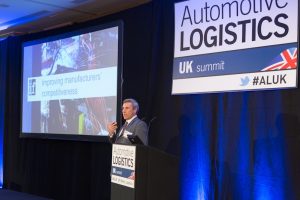 Mike Dickinson, general manager, Automotive, SMMT Industry Forum
Mike Dickinson, general manager, Automotive, SMMT Industry Forum“The overall programme is about dealing with uncertainty – as we know we have lots of areas of uncertainty – and moving organisations to be order winning notpotentially order losing,” he said.
According to Dickinson, that means having a good strategy and management system, as well as a good product lifecycle process but it was also important to have a full supply chain management capability in place all the way through to final delivery.
Dickinson flagged up the SMMT’s National Manufacturing Competitiveness Levels (NMCL), a support process for advanced manufacturing which aims to show the competitiveness of manufacturing companies regardless of shape, size or sector, to aid investment decisions.
The SMMT and its partners in NMCL, including the Automotive Council, are currently in discussions with the UK government’s Department for Business, Energy and Industrial Strategy to finalise agreement on a project to run over four years aimed at beginning in the next financial year. The department is also leading funding to cut emissions in the logistics industry through Innovate UK.
Disruptive technology
While the measures outlined by Dickinson were doing something to quell the anxiety brought by the UK’s political disruption, disruption of another kind is also affecting the future of the sector, namely the technology in the car itself. As has been discussed at a number of Automotive Logistics conferences in the last couple of years, that is something driven by answering the demand for customisation, as well as the latest advances in electric and autonomous technology. This all promised to bring change to supply chain and logistics business models.
The UK has pledged to ban diesel and petrol engines from 2040 and interest in alternative powertrains is gradually increasing. However, that comes with questions for the automotive logistics providers. Batteries require their own specialised supply and storage logistics, something that logistics provider and freight forwarder, Kuehne + Nagel, is working on with its BatteryChain service.
According to Achim Glass, head of global automotive vertical and senior vice-president at Kuhne + Nagel, the most important part of the vehicle is the battery but there is no distinct supply chain, something that will have to change as electric vehicle (EV) sales increase, but also because it is a very dangerous product.
“I believe that we will soon have enough critical mass, and enough EVs, on the road that justify a separate supply chain,” said Glass, highlighting that strict but variable storage regulations required separate locations.
 Awais Ajmal, general manager of supply chain and business process at Kia Motors (UK)
Awais Ajmal, general manager of supply chain and business process at Kia Motors (UK)Furthermore, EVs require charging stations in the outbound delivery processes and for those investing in charging stations the question is whether the UK will have the energy in its grid to support the forecast take-up of EVs by consumers, something it currently does not and is not likely to have in the near future. As John Stocker pointed out, it is no good investing in 20,000 charging points if there is no power to support them. Awais Ajmal at Kia Motors also pointed to this as a possible dissuasion for customers wanting to buy.
“We have had an EV available for some time now but I would agree that the infrastructure is not ready in the UK,” he said. “We have it at our port of entry where we can charge our stock vehicles but as soon as they are out in the network customers don’t have the electric charging stations.”
IHS Markit forecasts a huge growth rate in the take up of EVs over the next ten years, with share rising from less than 1% today to around 19%. “We are coming from a low level and we expect a massive change going forward,” said Benecke. “Nearly all OEMs have announced products and there will be more available over the next 24 months.”
Delegates polled on the take up in the UK of electric and other alternative-power vehicle technology overwhelming saw it as the future though they differed on the share of sales this would account for in ten years’ time. Almost 30% said there would be a take up of somewhere between 21-30% of vehicle sales, while an equal number of delegates put it as greater than 40%.
Planning for this take up and how quickly it may or may not happen is a difficult thing but the growth in EV sales is going to have a big impact on the logistics business. Citing figures from Volkswagen Group, Benecke pointed to the fact that the carmaker is expecting fewer model variants and lower material costs because there would be a 40% reduction in the number of vehicle platforms and 15,000 fewer component variants, as well as a reduction in propulsion systems of between 30-40%. This will mean reductions in inventory but there are other consequences that are difficult to predict.
Bob Mountain frankly admitted that Honda needed to know more about the requirements of the EVs to make planning effective, something the company was not currently in a position to provide.
“We will be launching an EV in Europe in fewer than two years but I don’t know what the specifications of that car are, what the charging requirements are going to be, and as it passes through the logistics chain, I don’t know how many times it needs to be recharged or at what level,” confessed Mountain. “I can’t share that or pass it through to the suppliers. Until I can get that information, it is going to be difficult to be ready.”
Customer centricity
The interest in electric vehicles is just one trend in vehicle technology that is testing the industry’s resources. Plans for electric and autonomous vehicles made by the likes of Tesla, Google and, most recently, British manufacturer Dyson are changing the landscape. Meanwhile, shared ownership schemes such as EvoCar in Vancouver are bringing into question whether the trend for personalisation will continue or whether manufacturing will return to a more standardardised process of assembly but with fewer parts involved.
 Bob Mountain, head of FVL, supply chain and logistics at Honda Europe (third right)
Bob Mountain, head of FVL, supply chain and logistics at Honda Europe (third right)Alongside those developments come new configurations in the supply chain, part of the trend for a more customer-centric services driven by the expectations that such companies as Amazon, Apple and Uber, have encouraged.
Kia Motors’ Ajmal said the top challenges for the company now changing customer patterns of demand and expectation.
“We are now in that generation that wants to order [a vehicle] and get it as soon as possible,” he said. “Customers are more challenging, more knowledgeable about products and demand good customer service. That is passed onto us and we pass it on to our service supply chain because they have to react.”
The ‘customer-centric’ focus carmakers currently have as they vie for sales has added more to model year releases and the range of specifications available, leading to more supply chain complexity.
Robert Garratt, executive partner at IBM Global Business Services, recognised that range proliferation created “a nightmare consequence in the supply chain”, and that went for inbound, outbound and aftermarket services.
He said the risk of having the wrong vehicle in the wrong place at the wrong time was greater and the complexity of now getting material to the lineside at the right time from logistics providers because of the proliferation of parts was also a greater challenge.
Parts proliferation has also had implications for service parts. “The consequences for the aftermarket where that proliferation of parts means very complex decisions have to be made about future stocking options and knowing what to have available is also a challenge,” he said “So we absolutely recognise that customer centricity is a good thing for the automotive industry but a tough ask for logistics.”
In dealing with this complexity, Garrett pointed to the applications of cognitive technology to the everyday concerns of a supply chain manager. Cognitive technology refers to the application of artificial intelligence to perform tasks that only humans used to be able to do. Garret said there are a range of applications and a lot of interest in them.
“The stuff we are developing in cognitive technology are systems that can learn from large amounts of data, observe what has been done in the past when similar patterns of data appeared, and advise and save time and intellectual energy in advising what should be done in the present situation,” he said.
 Rob Garratt, executive partner at IBM Global Business Services
Rob Garratt, executive partner at IBM Global Business ServicesIn a recent survey IBM conducted with 500 companies he said one of the most interesting things was the large up take in cognitive technology in forecasting.
Collaborative strategy
A more collaborative approach between the OEMs and their supply chain partners would also support a more customer-centric approach, supported by the advances made in supply chain technology.
OEMs need to share their vision of what the future will look like, said Ajmal at Kia Motors. “You can’t develop a plan with only one side or part of the information, you need both sides,” he said. “Historically that is something that has been lacking. It comes back down to mutual trust between suppliers and OEMs on sharing information and plans, even if it is sensitive information. That is the only way we can get a more strategic and holistic perspective on what the future is going to look like.”
Robert Garratt at IBM said that blockchain – the digital ledger approach behind cryptocurrency Bitcoin – was a new and effective way of holding and sharing data. He pointed out that if an OEM wanted to gather information from its tier suppliers into a master version, they could do so using blockchain’s digital ledger format.
“Blockchain shares that data with all involved,” said Garrett. It is a dispersion of data that creates trust because you cannot lie about what is going on.
That was something that Bob Mountain at Honda picked up on. “I think that [blockchain] is an opportunity to force collaboration, which maybe is missing at the moment. Some of the new technology coming will move us in this direction,” he said.
Varun Nair, director of supply chain consulting GT Nexus, which provides cloud-based supply chain platforms, pointed to the greater potential for collaboration through digital networks and said his company was working on precisely the sort of technology that could move the sector to a more transparent network.
Nair said that business enterprises were already linked into “a network of networks” through the external vendors each company dealt with. Those vendors in turn were in a pattern of communication with other customers, across sectors, but often competitors. He said that according to GT Nexus’ analysis, close to 80% of the supply chain data needed to effectively run a global supply chain was outside the enterprise and managed by external vendors.
“It is a complex supply chain with a lot of collaboration between the different players with a lot of data outside of the enterprise,” said Nair. The question is how can a company connect with this network of suppliers and customers. Web portals, EDI, emails, spreadsheets and proprietary partner systems tend not to provide simultaneous visibility to all partners.
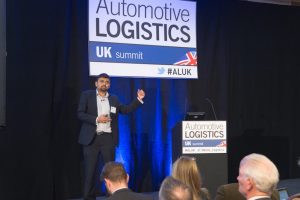 Varun Nair, director of supply chain consulting GT Nexus
Varun Nair, director of supply chain consulting GT Nexus“GT Nexus is trying to change this and come up with a multi-enterprise collaboration layer between that allows the enterprise layer to connect to one platform that connects to everyone externally, to the LSPs and supplier and customers,” he said.
Digitalisation of the network
Digital communications like these are becoming cheaper and more accessible. According to Professor Alan Braithwaite, founder of LCP Consulting, a global supply chain management consultancy, there is an exponential growth rate in digital connectivity and the implications for freight and logistics were huge. “What is being done now was unthinkable only five years ago,” he said, with one example being the opportunity now available to increase rail capacity through digital signalling.
Reliability and speed were also increasing which in turn increased reliability and customer service.
“A business with zero lead time has by definition 100% customer service,” said Braithwaite. He also pointed to the possibilities for collaboration and the move away from the distrust underpinning traditional business models, something that resulted in the building of intermediate handling locations that held stock to buffer against unreliable deliveries.
“The discovery we made is that accentuates the length of haul,” he said.
Through a more collaborative and joined up digitally enhanced supply chain, automotive customers and service providers have the potential to find line-ready material configured in localities operating with shared logistics systems across platforms and moving through highly automated crossdocks where the handling unit was not interfered with.
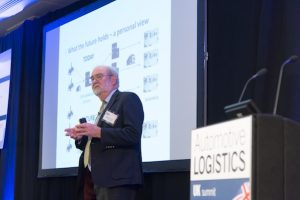 Professor Alan Braithwaite, founder of LCP Consulting
Professor Alan Braithwaite, founder of LCP Consulting“We can get the signals back from the customer order to the supplier and their suppliers in turn. There is an opportunity for everybody to comply. That is beyond our experience but we are going that way. We are talking about a radical change in the networks,” said Braithwaite.
Then and now
Kia Motors’ Awais Ajmal said digitalisation was opening new business opportunities, including through online purchasing trends and the possible growth in direct home delivery, which would be driven by the customer. That would require new logistics models.
“This is what we would experiment with: how do you service these customers?” he said. “It opens up another micro industry involved with collecting and servicing the car and delivering it back.”
Achim Glass at Kuhne + Nagel agreed that there were new opportunities and that its freight forwarding operations needed to more fully exploit the technology now available. The company has a goal of moving 20% of its business activity online by 2022 from the 2% that at which it is currently. It is also looking to acquire 30% of new customers through online sales channels, something more typical of business-to-consumer companies rather than business to business.
Glass said that technology was the game changer for logistics and for consumer demand in the industry.
“Digitisation together with automation opens the door to tremendous opportunities,” he said. “I believe that our freight forwarding industry and our logistics industry, also in automotive, is running behind. I think we could be much further ahead.”
Glass said the area of focus for the company was primarily productivity improvements and he highlighted that when you are talking about 40,000 warehouse staff, a productivity improvement of a couple of minutes through the use of digital technology could have massive gains.
“The relevant trends in freight forwarding are technological developments,” said Glass and that included the blockchains, artificial intelligence, machine learning, and the internet of things.”
Glass also pointed to automisation of business processes for productivity gain.
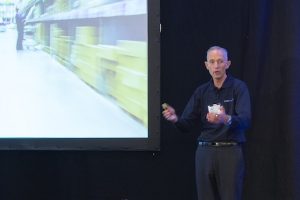 Achim Glass, head of global automotive vertical and senior vice-president at Kuhne + Nagel
Achim Glass, head of global automotive vertical and senior vice-president at Kuhne + NagelFor the last 12 months Kuehne + Nagle has been using predictive analysis of the 180m messages it sends a day to improve predictive forecasting for its customers, or what Glass called ‘now casting’.
“We are leveraging on the largest possible inventory of logistics data from public sources, such as airlines, ports and weather forecasts, but also from our proprietary data as one of the largest logistics providers in the world,” he said.
Technological disruption and the risk-to-fail approach that goes with it adds another level of uncertainty to the UK automotive sector and that could hold back the innovation required to deal with the potential tribulations ahead. The carmakers at this year’s summit summed up the cautious appetite for new technologies that could revolutionise the supply chain.
Honda’s Bob Mountain said that it was a case of running in parallel new approaches with the traditional ones and then disseminating the successes across the whole system.
For Mendez at Mercedes-Benz Parts Logistics, it was time to look for the tech start-ups around the world and see which ones it was worth investing in. “Start-ups are risky but we don’t have all the ideas to change the world,” he said. “You need to keep the basics working but also keep an eye out of expertise.
Automotive Logistics UK s part of the global Automotive Logistics series of conferences.
The next conference in the series is the Automotive Logistics India summit, which takes place in Chennai between November 7th-8th


























